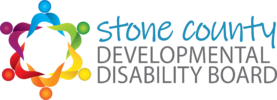Nick Milnes has been in the I/DD field for over 15 years. He serves as the Corporate Trainer and Community Partnerships for SCDDB. Nick trains each new staff to provide supports to bolster inclusion in a person’s community and to support them in experiencing belonging in their community as part of a fulfilling life.
During my time in high school, my friends and I always sat at the same table in the cafeteria. Across from us, there was a table where the students in the special education program sat with their paraprofessionals and teachers. One day, I observed one of those students joking with a peer, and the two began to giggle and laugh. One of the paraprofessionals quickly turned to them and said, “You need to stop laughing so loud, or you’ll have to eat lunch in the SpEd Room.” As I watched this, I became increasingly aware of the behavior of other students in the cafeteria, many of whom were laughing just as loudly, if not more so, without facing any similar consequences. This seemed unfair, and I began reflecting on another observation: I couldn’t recall ever seeing these students seated with other peer groups or interacting outside of their “designated area”. It seemed as though they were required to all sit together. Hopefully this was isolated to my school (I’m sure it wasn’t), but this was a classic case of individuals in isolation, even though they were in the same setting as the other students. And you can’t be included if you are isolated.
Inclusion vs. Integration: Understanding the Key Differences for Individuals with Intellectual and Developmental Disabilities
When it comes to individuals with intellectual and developmental disabilities (I/DD), two terms often come up in discussions about how to create more equitable environments: inclusion and integration. While they might seem similar, these concepts have distinct meanings and implications, particularly for individuals with I/DD. Understanding the difference between these terms is crucial for fostering environments that promote dignity, respect, and meaningful participation for all individuals, regardless of their abilities.
What is Integration?
Integration generally refers to the process of placing individuals with disabilities into mainstream environments—whether that’s schools, workplaces, or community settings—without necessarily modifying or adjusting the environment to accommodate their specific needs. In an integrated setting, individuals with I/DD might be physically present with their non-disabled peers, but the experience can often be isolating. They may not fully participate in activities, may struggle to access the same opportunities, or may face social exclusion due to a lack of support or understanding.
For example, in an integrated classroom, a student with I/DD might attend the same classes as their peers, but without appropriate support systems or accommodations, they may struggle to engage meaningfully in lessons or social activities. The physical presence is there, but meaningful participation often isn’t. When those challenges appear consistent, the opportunities are often labeled as failures, and the student would be placed in a more restrictive setting.
What is Inclusion?
Inclusion, on the other hand, takes integration a step further. It involves actively creating an environment that values diversity and ensures that individuals with I/DD are not only present but are also full participants in all aspects of life. Inclusion requires a fundamental shift in attitude, where people are seen not as outsiders or “others” but as integral members of the community. It’s not enough just to place someone with a disability in a general setting; the environment must be accessible, welcoming, and equipped to meet their needs. This would include changes to content, approaches, structures and strategies that ensure all receive an equitable experience that best corresponds to their needs.
In an inclusive classroom, for example, teachers might modify lesson plans, provide assistive technologies, or use different teaching methods to ensure that a student with I/DD can participate alongside their peers. Peer relationships are also nurtured in an inclusive setting, allowing for greater social interaction and fostering a sense of belonging.
Why Does the Difference Matter?
The difference between inclusion and integration is not just semantic—it has a profound impact on the quality of life for individuals with I/DD. While integration may provide the opportunity to be physically present in a mainstream setting, inclusion ensures that the individual has the necessary supports, opportunities, and respect to thrive. Inclusion emphasizes accessibility, belonging, and active participation, while integration often overlooks these vital components.
For example, when a child with a disability is integrated into a regular classroom without accommodations, they may experience frustration, isolation, and lower self-esteem. In contrast, an inclusive classroom environment, with proper support systems in place, can help the child develop skills, form friendships, and feel confident in their abilities.
Moving Towards Inclusion
To move towards inclusion, communities, schools, and workplaces must embrace a mindset that goes beyond mere tolerance of differences. It requires empathy, understanding, and a commitment to ensuring that people with disabilities are empowered to contribute in ways that align with their abilities, interests, and goals.
This includes providing education and awareness to peers, offering proper training and resources for teachers and employers, and ensuring that infrastructure is accessible to all. It also means advocating for policy changes that prioritize the rights of individuals with I/DD to fully participate in all aspects of society.
Inclusion is not just about being present; it’s about being supported, valued, and respected. While integration places individuals with I/DD in the same spaces as their non-disabled peers, inclusion goes further by ensuring that everyone can meaningfully engage and belong. By embracing inclusion, we create a society where diversity is celebrated, and all individuals have the opportunity to thrive.
